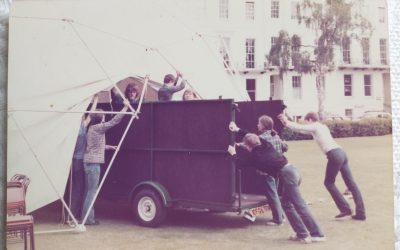 Every winter at around this time, we see a kind of bird we never see at any other time of the year. Fieldfares, which are large thrushes, arrive from Scandinavia and eat the last of the berries on the rowan tree outside our kitchen window. First we notice that the tallest trees in the area are suddenly full of birds, their pale tawny colours glowing in the winter sunlight and their outlines clear because there are no leaves on the trees.
Every winter at around this time, we see a kind of bird we never see at any other time of the year. Fieldfares, which are large thrushes, arrive from Scandinavia and eat the last of the berries on the rowan tree outside our kitchen window. First we notice that the tallest trees in the area are suddenly full of birds, their pale tawny colours glowing in the winter sunlight and their outlines clear because there are no leaves on the trees.
The fieldfares have a special way of remaining motionless in the treetops as they wait in ‘sentinel mode’. Then they swoop off, arriving a moment later at the rowan tree to strip what berries remain. I have tried numerous times to take photos of them, but as soon as they see me move, they take off. Hence there is only one fieldfare in the photo, but often the rowan tree has half a dozen of them, bouncing around the branches.
The arrival of the fieldfares feels like something to celebrate, a cheering confirmation that nature’s winter calendar is turning as it should.
We went out into the garden the other morning and found a shiny new teaspoon lying in the middle of the lawn. It wasn’t one of ours. Now we are having fun speculating on how a teaspoon found its way to our garden during the night. Dropped by a magpie? We have plenty of those around. Brought by a fox? We have those too. An enigmatic message lobbed over the wall by a disgruntled neighbour? Left behind after a fairies’ midnight feast?




Discarded by a spoonbill, as surplus to requirements?